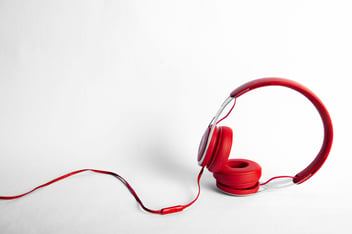Which would be more memorable for you, reading a section of a textbook about an event in history, or watching a musical that depicts that same historical event?
If you answered “watching a musical,” then you know the power of multimodal learning. When building effective, engaging lessons, teachers and instructional designers know that you can’t just give students reading materials and expect them to understand the content. Multimodal learning helps boost engagement, build connections, and improve learning overall.
Yet, what exactly is multimodal learning, what are some examples of its use, and how does it benefit learners?
What is multimodal learning?
Put simply, multimodal learning means presenting content in multiple sensory modes such as visual, aural, written, and/or kinesthetic. If this sounds reminiscent of learning styles to you, there is an association. Multimodal learning promotes the use of multiple learning styles (which can also be called modes) when teaching any given concept.
Education professionals including curriculum designers, instructional designers, and teachers can use the concept of multimodal learning to enhance their lessons, trainings, and courses. How does it work?
Multimodal Learning in Action
Multimodal learning has become popular in recent years as education moves away from outdated traditional methods. In the past, education from kindergarten through the university level featured a teacher at the front of the room lecturing and telling students what to do. Even professional development learning focused on lectures, reading texts, and answering questions.
Today, multimodal learning transforms classrooms and learning environments into dynamic, engaging spaces. Here are a few ways that multimodal learning is used in various learning settings:
- Early Childhood Education: Preschools are full of multimodal learning. Children sing songs, experiment at water and sand tables, look at pictures in storybooks, and more.
- Elementary Level: At the elementary level, children might use manipulatives for doing math work, bringing in a kinesthetic experience. Other grade school multimodal learning experiences include watching videos, Project Based Learning, field trips, building or drawing models, listening to podcasts, Think Pair Share activities, games, and more.
- High School Level: In high school classrooms, you’re more likely to see traditional-style learning. However, students can benefit from Maker spaces, multimedia research projects, AR and VR resources, working on a variety of multimedia digital projects (building a website, recording a podcast, producing a news show), and more.
- University Level: Incorporating multimodal learning into university-level courses can be challenging but is still important. Instructors can use podcasts, photos and illustrations, videos, models, experiments, field and lab work, field trips, museums, and more to bring multimodal learning to their courses.
- Professional Development and Job Training: When working with adult professionals, instructors often resort to reading, writing, and lecturing. However, multimodal learning such as AR and VR experiences, interactive digital games, videos, role-playing, internships, and other activities can bring content to life.
Bringing multimodal learning to courses, classrooms, and trainings means making content available in multiple forms. It may mean taking a little longer with content so that students can engage with it in various different ways. It’s natural to wonder why multimodal learning is important. Is it worth all of this extra effort?
What are the Benefits of Multimodal Learning?
A multimodal environment for learning brings out the best in students. Here are three main benefits you can expect to see when using a multimodal approach to learning:
- Improved Engagement: Surveys show that students feel more engaged in classes when they have access to flexible and interactive tools in or out of the classroom. Educational videos, access to podcasts and recordings of lectures, interactive content such as quizzes and games, and more are just a few multimodal applications that students can use anytime they’d like. Other studies, such as this one support this finding, showing that students reported a better attitude toward a social studies course taught with multimedia elements vs. traditional teaching methods.
- Effective Learning: Studies show clear benefits of the “multimedia effect,” which is that students achieve deeper understanding when presented with various inputs such as video, text, and audio, rather than just from text alone. This may be related to the fact that multimodal learning gives students the chance to work in their preferred, most comfortable learning style, but also pushes them to improve their skills in other modes.
- Accessibility for All: Multimodal learning embraces using as many modes as is appropriate as once. This often results in greater accessibility for students with diverse needs. On the surface, including captions in an educational video simply means adding a “written” or “text” mode of learning to an audio-visual resource. Captions also help students who are hard of hearing, non-native English speakers, or even students with ADHD. Each time multimodal learning is used, content becomes more accessible for a wide range of learners with very different needs.
Multimodal learning keeps learning fresh, engaging, and effective for all involved. How will this information about multimodal learning influence how you teach, or even how you learn?
Get in touch with us on Facebook, LinkedIn, or Twitter, and let us know!
Rachel Peachey
Rachel is an education industry writer and former Montessori schoolteacher. Originally from Pennsylvania, Rachel lives in Guatemala with her husband and three children.
- #Classroom
- #Video in Digital Learning
- #Educational Videos
- #Tips for Using Video
- #Video Content Partners
- #Boclips for Publishers
- #Issues in Education
- #Educational Videos by Subject Area
- #News and Announcements
- #Events & Holidays
- #Video and Teaching Tools
- #Teaching Methodologies
- #Education Videos
- #Video and Digital Literacy
- #Short Educational Videos
- #Instructional Design
- #Multimodal Learning
- #Video and Student Safety
- #Accessibility in Education
-3.png?width=390&height=223&name=Untitled%20design%20(2)-3.png)


.png?width=1152&height=660&name=Copy%20of%20Untitled%20Design%20(1).png)



